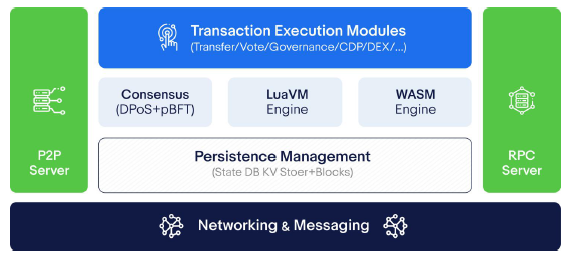Let's learn a little about the WaykiChain node architecture

In this post, we will talk a bit about the WaykiChain node architecture, and some other considerations set out in the WICC white paper, among these browser wallet plugin, and mobile wallet.

Browser wallet plugin
The browser wallet plugin (e.g., WaykiMax) is a kind of lightweight WaykiChain wallet that allows website browsers to interact with smart contracts on WaykiChain, as well as various decentralized applications on WaykiChain. The barrier to use is significantly reduced, and convenience is improved in future asset and transaction launches.
Mobile wallet - WaykiTimes is a mobile wallet for WaykiChain. It is mainly designed for cryptocurrency investors, blockchain developers and industry partners, helping users to manage digital assets, De-Fi experience and other applications more conveniently..

WaykiChain node technology architecture
There is only one WaykiChain node program available through the code repository on WaykiChain's GitHub, but it can be divided into two types of roles when deployed.
1. Core nodes (or countable nodes, supernodes): used to verify transactions and generate new blocks; there are 11 such core nodes deployed in WaykiChain.
2. Common nodes: used to synchronize data with the WaykiChain central node, manage the wallet's private key and address, and include initiation transactions to the chain. The only condition that determines whether a node becomes a central node is the number of votes it earns.
Since WaykiChain holders can initiate voting and withdrawal at any time, the number of votes received by each node can change continuously. Only nodes with the top 11 votes become central nodes and need to perform accounting work similar to the blockchain.
Consulted source.
-WaykiChain - WICC white paper